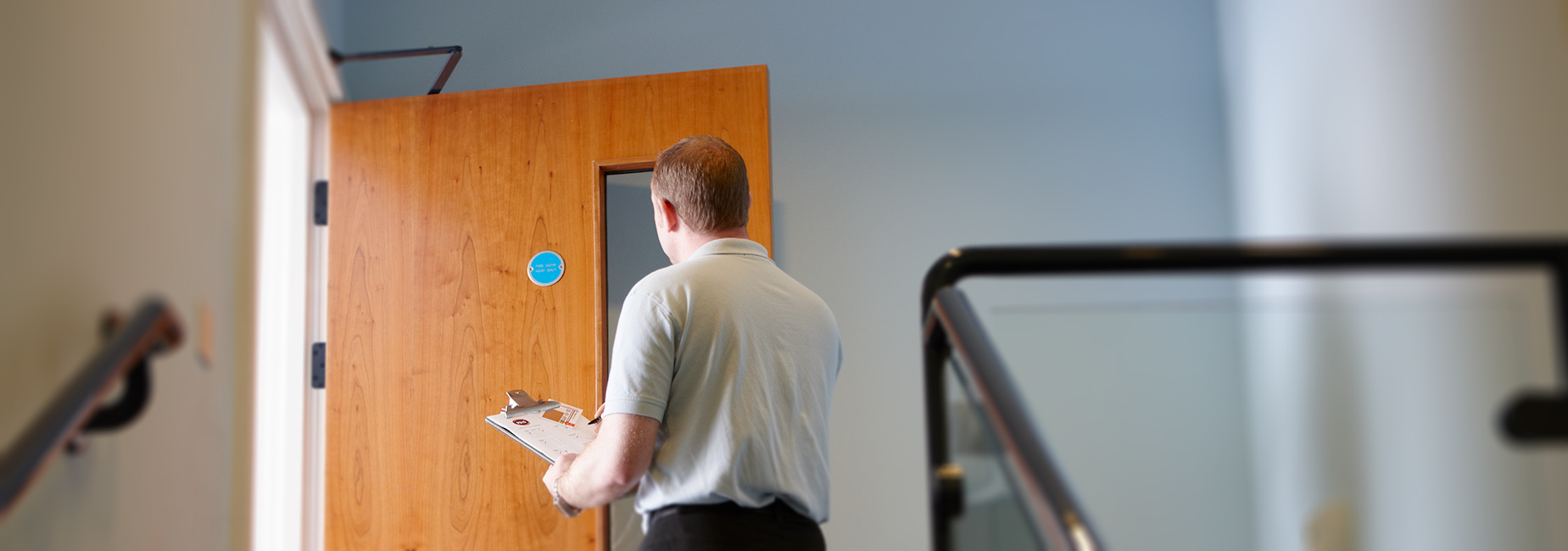Unlike most other types of fire equipment, fire doors are in regular use and are therefore subject to wear and tear at a far greater rate. If they’re not properly looked after, that creates a substantial risk that they won’t perform correctly if there is a fire. That could affect the speed at which fire and smoke spreads throughout a building with potentially devastating consequences.
Unfortunately, there often seems to be a perception that once a fire door is installed, it can then be left to do its job from thereon in. But that really is not the case and such an assumption could have tragic results. The failure of its fire doors was one factor identified as contributing to the appalling outcomes of the Grenfell Tower fire. The final fire risk assessment conducted before the fatal blaze raised concerns about the absence of cold smoke seals on the doors and self-closing devices failing to work properly, but they had not been acted upon.
Research has shown how few fire doors are actually fit for purpose
Inadequate fire doors could be a far more extensive problem than many building owners appreciate. Research released last year by the Fire Door Inspection Scheme showed that more than three quarters of the doors they had inspected in 2019 were not fit for purpose. The research examined more than 100,000 inspections that had taken place in over 2,700 buildings and discovered a whole host of problems.
57% of fire doors needed some form of small-scale maintenance. 30% of the inspected doors were condemned because of the way they had been installed. The top three reasons for condemning a door related to excessive gaps, problems with smoke seals and poorly adjusted door closers. 16% of doors inspected were not even fire doors. It’s positive that inspections by competent individuals were taking place, putting the building owners in a position to rectify these issues. But it raises the question of how many other people responsible for fire safety in workplaces and residential premises across the UK are unaware of the dangers posed by their fire doors. It seems likely there are many fire doors out there that will not protect people adequately, and provide enough time for a full and safe evacuation, if there is a fire.
While most people will have an appreciation of what fire doors do, the research suggests many are failing to view them as fire safety equipment that must be maintained. Even if fire doors have been correctly specified and installed, a lack of understanding of the need to check them regularly and have them periodically inspected could end up having serious outcomes.
Regular maintenance is essential
A regular simple five-step check is an important way to pick up any immediately obvious issues. First of all, check that the fire door is certified. Examine the gaps around the top and sides of the door; they must be consistently less than 4mm when closed. The space under the door can be slightly more but if you can see light coming through, it’s likely the gap is too large. Make sure the seals are not showing any sign of damage. There should be at least three hinges, all of which must be firmly fixed with no damaged or missing screws. Finally, make sure it closes smoothly and clicks onto the latch with no obstructions impairing it. And it should go without saying that fire doors must never be left wedged open – if you come across any that have been, close them immediately.
While these checks will pick up any immediately apparent issues, it’s also important to bring in a trained inspector who will carry out a more extensive fire door inspection to make sure doors are fully functional. They will carefully scrutinise the door itself, the integrity of all seals and components, and the condition of the frame. While the timescale for such inspections isn’t set in law, it is anticipated that more specific requirements relating to fire door compliance, including inspection frequency obligations, will form part of the ongoing response to the Hackitt report.
Are you confident that your fire doors could effectively slow down the spread of fire and smoke throughout your premises?
Given the vital role that fire doors play in protecting people, anyone with responsibility for fire safety must make sure all fire doors in their premises continually remain fit for purpose. Are you confident that yours would be? On April 5th Jackson Fire and Security is launching its new Fire Door Inspection service which will be available via all of its branches across the UK. If you’d like to find out more about how we can help you, or book an inspection, please contact your local branch.
